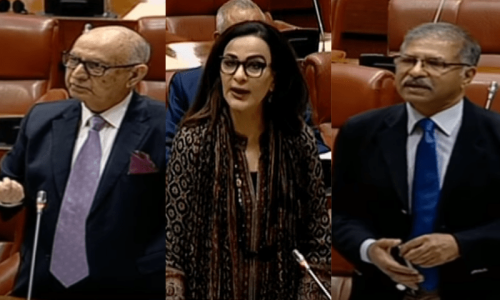
Art is made to be seen, and everyone experiences art at some point in their lives. The nature of the art encounter, however, is singular to every individual — some viewers are baffled while others are deeply moved.
The impact of art on the viewer is subject to the effort and interest an individual invests in it. One can simply just look at art or see it at length and engage with it. Looking is about literally describing what is in front of you, while seeing is about applying meaning to it. When we see, we understand what is seen as symbols and we interpret what is there in front of us. Art historian Erwin Panofsky calls the symbols in an artwork “iconography” and any image can be easily broken down into the iconography that makes it up.
The sun, cactus, crow and crucifixion symbolise Sadequain’s angst-driven art but it is the decapitated head image that is a defining feature of his torment. His ‘Sar-ba-kaf’ painting portrays a headless man seated before a primed canvas. He is shown sketching his self-portrait with one hand, while holding a severed head in his other hand. The ‘Sar-ba-kaf’ series of paintings allude to Sarmad Shaheed Majzoob’s execution, as decreed by Emperor Aurangzeb Alamgir in the compound of Jama Masjid in Delhi. In order to bare social evil, Sadequain took inspiration from the Sufi sensibility of assuming the persona of a sinner to expose hypocrisy in society. In his volume on the artist, Akbar Naqvi writes that Sadequain was a “malamati like Hafiz, Ghalib, Dard and Mir,” who “punished his body, in life as well as in his drawings and paintings, unlike any other artist in Pakistan.”
Art does not show people what to do, yet engaging with a good work of art can be a humanising experience
Art is at its very best when it provokes us to have new thoughts and ask questions about the world around us. The key here, to this sense of discovery, is context. Contemporary miniature is a prime example of an art genre that evolves within a past, present and future context. Its current sociopolitical form is a deconstruction/reinvention of the traditional Mughal miniature. This existing model is now inspiring multimedia innovations that purport a miniature art sensibility but are otherwise in tandem with global futuristic art.

Anyone who has felt a thrill at observing the beauty of a painting will realise that art is not just a recording of human experience, but also an involvement of human experience. Some people respond to art with prior knowledge and others with curiosity. It is important to just be yourself because personal interpretation is just as important as anyone else’s. Look at the piece from several different angles and try to understand why the art is abstract rather than realistic. How was it made? Was it cast in bronze, formed with found objects or moulded out of clay?
Do not write off art, an entire genre, or even a particular work just because it does not agree with you at the moment. While contemporary art might seem exclusive or confusing, all viewers have to do is meet the artist halfway. Once you are comfortable with allowing yourself to feel something about art, take it to the next level. Try to go beyond a passing interest (average viewing time for art is three seconds per work), and find a personal connection to the work — emotionally and physically. Think about what you are observing and attach meanings to those thoughts. This is a process of interpretation. It is not a science or about finding the “right answers”, but about thinking creatively about the most plausible understandings of a work. Even if you are relating art to something simple and ordinary, it is a step in the right direction.

American writer, philosopher and filmmaker Susan Sontag once argued “against interpretation” and in favour of a more immediate, more sensual, more purely subjective response to art; but others argue, just as validly, that art is part of culture and embodies a wide range of cultural meanings and that our job is to ferret them out. Both are correct.
If you want your viewing experience to be enlightening, come with an open mind, and give the art the time and consideration it needs to move you. Art does not show people what to do, yet engaging with a good work of art can be a humanising experience, as it connects you to your senses, body and mind.
Published in Dawn, EOS, June 9th, 2019















































Dear visitor, the comments section is undergoing an overhaul and will return soon.